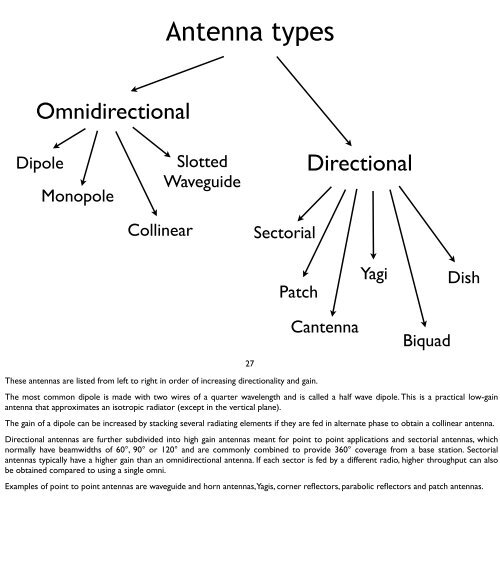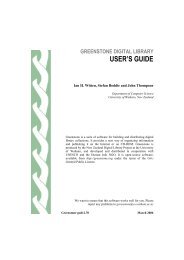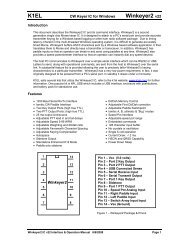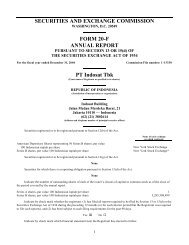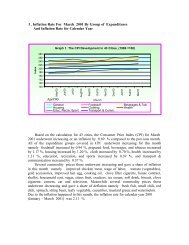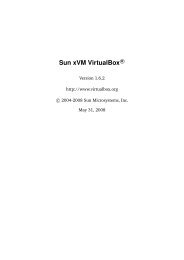Antennas and Transmission Lines
Antennas and Transmission Lines
Antennas and Transmission Lines
Create successful ePaper yourself
Turn your PDF publications into a flip-book with our unique Google optimized e-Paper software.
Omnidirectional<br />
Dipole<br />
Monopole<br />
Collinear<br />
Antenna types<br />
Slotted<br />
Waveguide<br />
27<br />
Sectorial<br />
Patch<br />
These antennas are listed from left to right in order of increasing directionality <strong>and</strong> gain.<br />
Directional<br />
Cantenna<br />
Yagi<br />
Biquad<br />
Dish<br />
The most common dipole is made with two wires of a quarter wavelength <strong>and</strong> is called a half wave dipole. This is a practical low-gain<br />
antenna that approximates an isotropic radiator (except in the vertical plane).<br />
The gain of a dipole can be increased by stacking several radiating elements if they are fed in alternate phase to obtain a collinear antenna.<br />
Directional antennas are further subdivided into high gain antennas meant for point to point applications <strong>and</strong> sectorial antennas, which<br />
normally have beamwidths of 60°, 90° or 120° <strong>and</strong> are commonly combined to provide 360° coverage from a base station. Sectorial<br />
antennas typically have a higher gain than an omnidirectional antenna. If each sector is fed by a different radio, higher throughput can also<br />
be obtained compared to using a single omni.<br />
Examples of point to point antennas are waveguide <strong>and</strong> horn antennas, Yagis, corner reflectors, parabolic reflectors <strong>and</strong> patch antennas.


